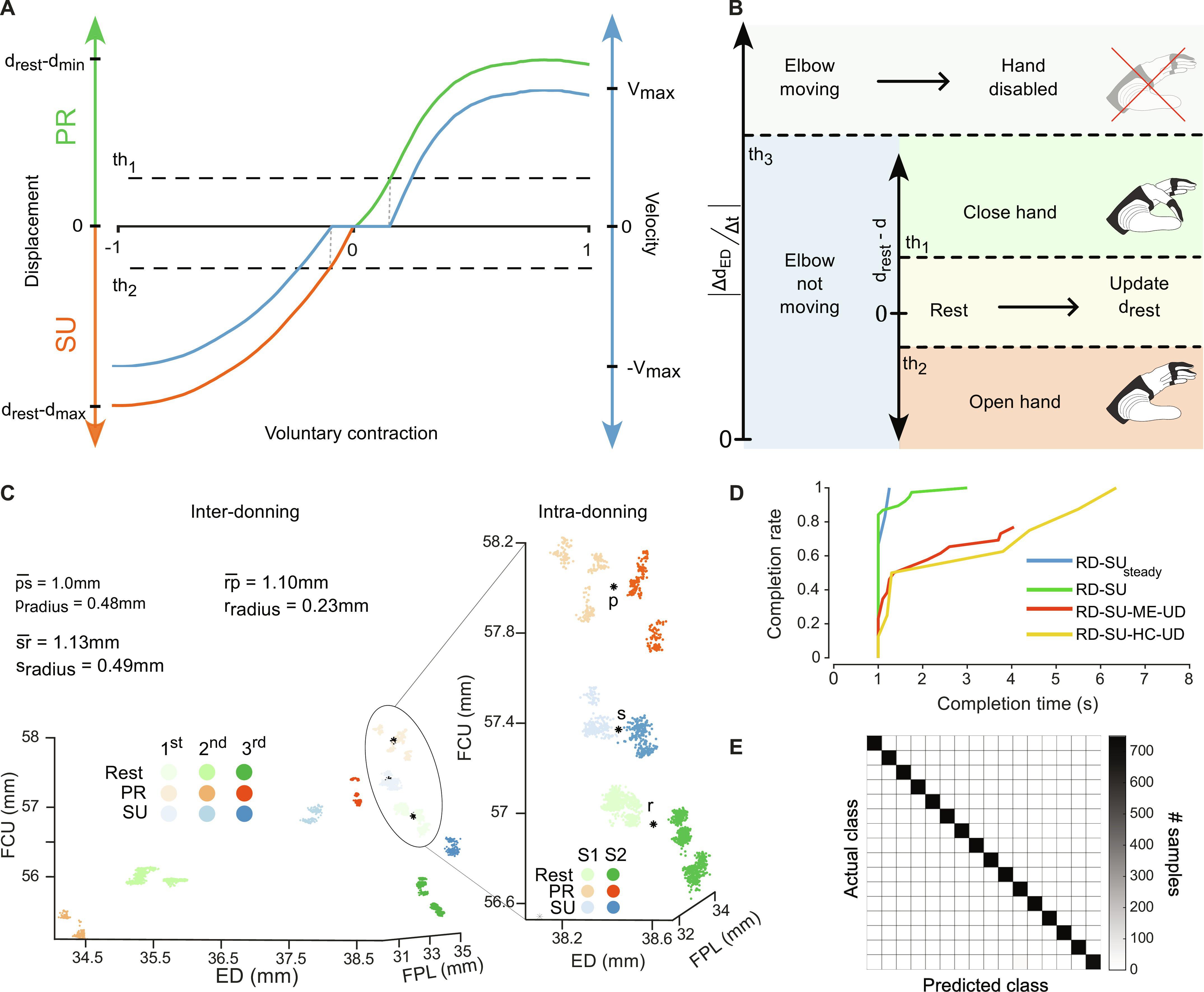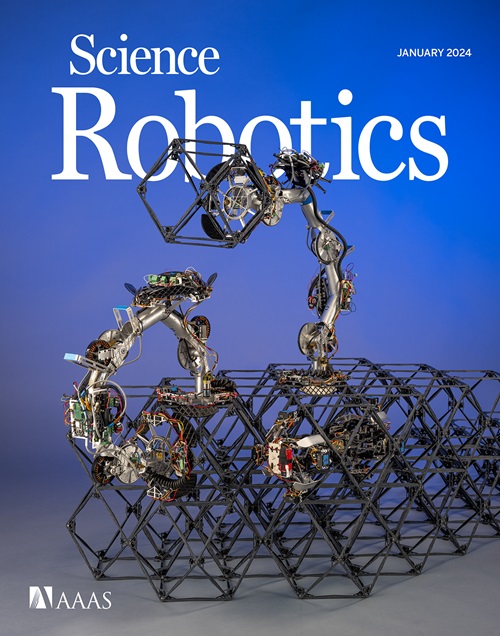Restoration of grasping in an upper limb amputee using the myokinetic prosthesis with implanted magnets
IF 26.1
1区 计算机科学
Q1 ROBOTICS
引用次数: 0
Abstract
The loss of a hand disrupts the sophisticated neural pathways between the brain and the hand, severely affecting the level of independence of the patient and the ability to carry out daily work and social activities. Recent years have witnessed a rapid evolution of surgical techniques and technologies aimed at restoring dexterous motor functions akin to those of the human hand through bionic solutions, mainly relying on probing of electrical signals from the residual nerves and muscles. Here, we report the clinical implementation of an interface aimed at achieving this goal by exploiting muscle deformation, sensed through passive magnetic implants: the myokinetic interface. One participant with a transradial amputation received an implantation of six permanent magnets in three muscles of the residual limb. A truly self-contained myokinetic prosthetic arm embedding all hardware components and the battery within the prosthetic socket was developed. By retrieving muscle deformation caused by voluntary contraction through magnet localization, we were able to control in real time a dexterous robotic hand following both a direct control strategy and a pattern recognition approach. In just 6 weeks, the participant successfully completed a series of functional tests, achieving scores similar to those achieved when using myoelectric controllers, a standard-of-care solution, with comparable physical and mental workloads. This experience raised conceptual and technical limits of the interface, which nevertheless pave the way for further investigations in a partially unexplored field. This study also demonstrates a viable possibility for intuitively interfacing humans with robotic technologies.

使用植入磁铁的肌动假肢恢复上肢截肢者的抓握能力
失去一只手会破坏大脑和手之间复杂的神经通路,严重影响患者的独立程度以及从事日常工作和社交活动的能力。近年来,外科技术和科技发展迅速,旨在通过仿生解决方案(主要依靠探测残留神经和肌肉的电信号)恢复与人手相似的灵巧运动功能。在此,我们报告了一种界面的临床应用情况,该界面旨在通过被动磁性植入物感知肌肉变形来实现这一目标:肌动界面。一名经桡动脉截肢的受试者在残肢的三块肌肉上植入了六块永久磁铁。我们开发了一种真正独立的肌动假肢,将所有硬件组件和电池嵌入假肢插座中。通过磁铁定位检索自主收缩引起的肌肉变形,我们能够采用直接控制策略和模式识别方法实时控制灵巧的机械手。仅用 6 周时间,参与者就成功完成了一系列功能测试,在体力和脑力工作量相当的情况下,取得了与使用肌电控制器(一种标准护理解决方案)类似的成绩。这次体验提高了该界面在概念和技术上的局限性,但也为在这一部分尚未开发的领域开展进一步研究铺平了道路。这项研究还展示了人类与机器人技术直观连接的一种可行方法。
本文章由计算机程序翻译,如有差异,请以英文原文为准。
求助全文
约1分钟内获得全文
求助全文
来源期刊

Science Robotics
Mathematics-Control and Optimization
CiteScore
30.60
自引率
2.80%
发文量
83
期刊介绍:
Science Robotics publishes original, peer-reviewed, science- or engineering-based research articles that advance the field of robotics. The journal also features editor-commissioned Reviews. An international team of academic editors holds Science Robotics articles to the same high-quality standard that is the hallmark of the Science family of journals.
Sub-topics include: actuators, advanced materials, artificial Intelligence, autonomous vehicles, bio-inspired design, exoskeletons, fabrication, field robotics, human-robot interaction, humanoids, industrial robotics, kinematics, machine learning, material science, medical technology, motion planning and control, micro- and nano-robotics, multi-robot control, sensors, service robotics, social and ethical issues, soft robotics, and space, planetary and undersea exploration.
 求助内容:
求助内容: 应助结果提醒方式:
应助结果提醒方式:


